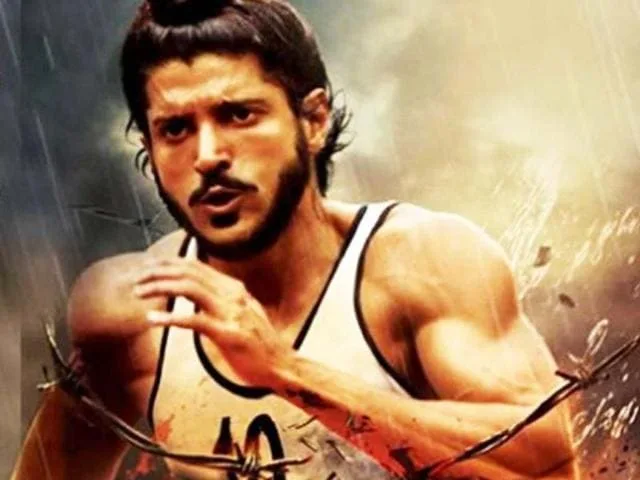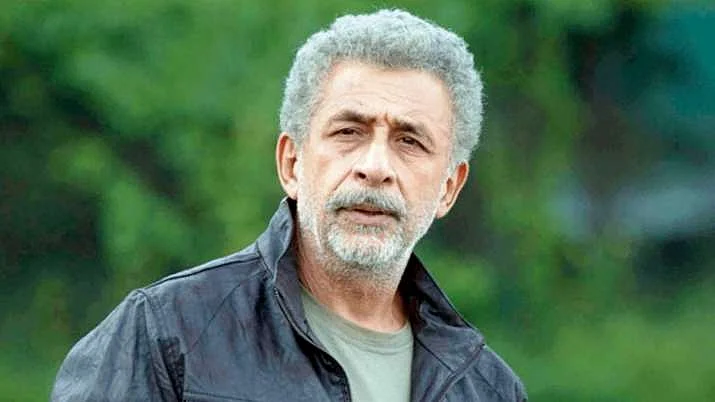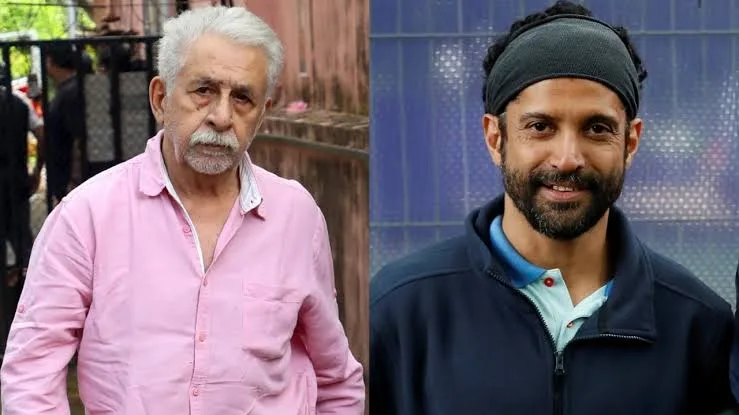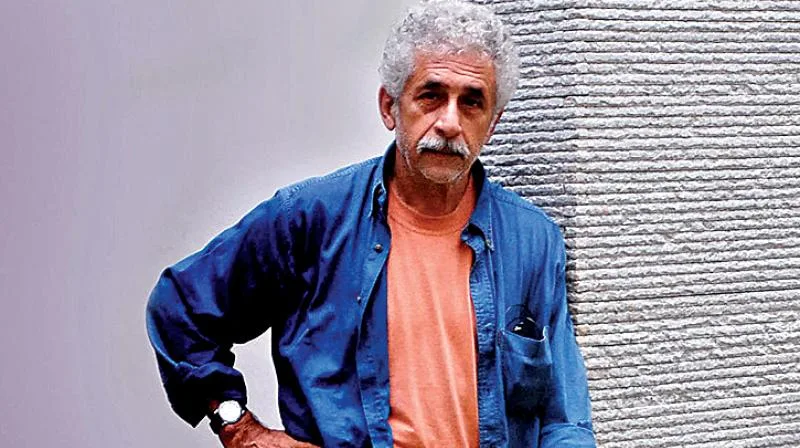Veteran actor Naseeruddin Shah has reevaluated his harsh public critique of Farhan Akhtar’s performance in the 2013 biopic Bhaag Milkha Bhaag, suggesting that his original remarks may have been overstated. The reversal comes after Akhtar described Shah’s comments as “distasteful” during a recent interview. Now Shah acknowledges the backlash and admits the framing of his critique was amplified beyond his intent.
The original spark for the dispute dates back over a decade. When Bhaag Milkha Bhaag was released, Shah openly dismissed the film and questioned Akhtar’s portrayal of Indian sprinter Milkha Singh. His remarks included statements like “building up muscles and growing your hair is not exactly working hard on your acting” and “at least he should have tried to look like Milkha.”

Fast forward to November 2025, and Akhtar responded strongly. He emphasised that although he welcomes critique, the way it was delivered felt personal and inappropriate in a public forum, given their shared history. “I have known him for so many years… he has known me since I was a child,” Akhtar remarked, calling the approach “distasteful” and noting that a phone call would have sufficed instead.
Shah’s latest comments acknowledge this tension. During a conversation with the media, he said, “He is right but I think my statement has been exaggerated a bit.” When pressed about which part, Shah responded coyly: “I don’t think you need to be a genius to figure that out! Read both statements.”
This exchange highlights deeper undercurrents beyond the immediate disagreement. Shah belongs to a generation of actors known for cerebral commentary on cinema; his blunt critique of Akhtar’s muscle-bound transformation in Bhaag Milkha Bhaag challenged popular conceptions of performance over spectacle. The film itself was a commercial hit and remains widely celebrated, complicating the legacy of his comments.

Yet the incident also underscores how star relationships combine personal history, public scrutiny and professional critique. Credit must be given to Akhtar’s willingness to call out perceived disrespect publicly, while Shah’s later concession demonstrates a rare openness to reassessing past statements in light of evolving norms around public discourse.
From a broader view, the scenario speaks to the challenges actors face when they cross from private to public opinion. Shah’s pivot—from robust denunciation to expressed ambiguity—signals that media amplification can reshape intent. His statement acts as a form of redress, even as he preserves his right of opinion.
What does this mean for industry dynamics? For one, it implies that public critique in cinema now carries layers of personal context. The actor-director-star network is no longer immune to internal critique becoming external news cycles. Both sides of the exchange are aware of the theatre of commentary.

Secondly, it invites reflection on how audience memory preserves star interactions. Twenty years after Bhaag Milkha Bhaag, the public revisits the film not just for its narrative but for the cultural conversation around performance, authenticity and legacy. Shah’s remarks then become part of the film’s afterlife.
Lastly, the episode shows that speaking truth—however one defines truth—carries consequences in an ecosystem where history is searchable and reputations live online. Shah’s critique went into archives; Akhtar’s response turned it into a sub-plot. Shah’s concession is his attempt to adapt.
Going forward, the two actors seem poised to move on, professionally if not personally. Shah continues to work on new projects, while Akhtar’s trajectory spans acting, direction and production. The interaction may be less about reconciliation than a mutual acknowledgement of professional boundaries, critique style and public legacy.

In the end, the exchange is less about one film or one performance than how veteran and contemporary figures communicate in a digital age. The movie remains a milestone; the feud becomes a footnote. What remains may be the lesson: that in the glare of media and public memory, even a critical remark has a half-life. Shah’s admission of exaggeration demonstrates that even for a critic of his calibre, context, tone and timing matter.
For fans and observers of Indian cinema, the moment matters. It offers a rare glimpse into how star culture adapts—not just through films, but through attitudes toward critique, legacy and one’s own words. And in that sens,e it may last longer than the film itself.


